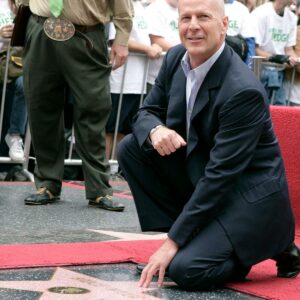In the rich tapestry of music history, few artists have managed to fuse their sound with a visual narrative as seamlessly as Mary J. Blige. As the “Queen of Hip-Hop Soul,” Blige has consistently pushed the boundaries of R&B and hip-hop, but beyond her voice and lyrical genius lies another powerful tool in her artistic arsenal: visual storytelling. Blige’s album covers are more than just packaging; they are deliberate, carefully crafted extensions of the emotional themes explored in her music. Each cover offers a window into the soul of the album, inviting listeners into her world even before they hit play.
The Role of Visual Storytelling in Music
In a world where music is increasingly consumed digitally, album covers can feel like an afterthought, reduced to a small thumbnail on a screen. Yet, for artists like Mary J. Blige, visual storytelling remains an integral part of the artistic process. Album covers are more than just a marketing tool; they are a form of visual art that communicates an artist’s identity, message, and the emotional tone of the album. Throughout music history, icons like The Beatles, David Bowie, and Prince have utilized album art to communicate their evolving personas, and Blige stands proudly in this lineage. Her covers offer more than just a first impression—they set the stage for the emotional journey listeners are about to embark on.
Blige’s commitment to visual storytelling is evident in every album she releases. Whether it’s through the use of color, fashion, or pose, each cover provides a visual narrative that complements the music within. The images are not just decoration—they are an extension of her voice, giving depth and context to the themes she explores in her lyrics.
Early Album Covers: Raw and Unfiltered Emotion
Blige’s visual storytelling journey began with her debut album, What’s the 411? (1992). The cover, featuring a black-and-white image of Blige, conveys a rawness and authenticity that was mirrored in her music. With a defiant yet vulnerable expression, the image captures the essence of an artist unafraid to bare her soul. The minimalist aesthetic, free from the gloss and glamour that often characterizes debut album covers, felt like a visual declaration: this is Mary J. Blige, unfiltered and unapologetic.
Her follow-up album, My Life (1994), continued this theme of vulnerability. The cover, a close-up shot of Blige in a contemplative pose, with her face partially obscured by shadows, perfectly encapsulates the album’s themes of inner turmoil and healing. It’s an intimate portrayal of an artist grappling with personal demons, much like the music itself, which delves into themes of depression, addiction, and self-empowerment. The visual interplay of light and shadow on the cover echoes the lyrical exploration of darkness and hope within the album.
The Evolution of Blige’s Visual Aesthetic: From Pain to Power
As Blige’s music evolved, so did her visual storytelling. Her 1997 album, Share My World, marked a significant shift in both sound and imagery. On the cover, Blige is pictured in a glamorous, high-fashion pose, wrapped in luxurious fabric. This visual transformation mirrored her musical evolution; while still rooted in R&B, her sound began to incorporate elements of soul and jazz, signaling a move towards a more empowered, self-assured identity. The cover imagery reflects this change—this is a Mary J. Blige who is no longer just surviving but thriving.
Perhaps one of the most iconic examples of Blige’s visual storytelling is the cover of her 2001 album, No More Drama. The close-up of her face, with eyes closed and hands clasped in prayer, speaks volumes. Gone is the raw vulnerability of My Life—this is an image of peace and resolution, a visual representation of the album’s themes of overcoming adversity and finding inner strength. The simplicity of the image belies its emotional power; it’s a portrait of a woman who has come through the fire and emerged stronger.
With each subsequent release, Blige continued to refine her visual narrative. The cover of The Breakthrough (2005), for example, features Blige in a sleek, modern outfit against a stark white background. The minimalist design reflects the album’s focus on personal growth and transformation. The choice of white—often associated with purity and new beginnings—reinforces the idea of a fresh start, a theme that runs through the album’s lyrics.
Visual Iconography and the Reinforcement of Themes
Blige’s use of visual iconography is a hallmark of her album covers. Throughout her career, she has employed symbols and imagery that reinforce the themes of her music, creating a cohesive narrative that spans both her sound and her visuals. Take the use of light and shadow on the cover of My Life, for instance. The interplay of darkness and light mirrors the album’s exploration of despair and hope, serving as a visual metaphor for the emotional journey contained within the music.
Similarly, the prayer-like pose on the cover of No More Drama functions as a visual shorthand for the album’s themes of redemption and healing. Blige’s hands, clasped in prayer, are not just a gesture of faith—they are a symbol of the peace she has found after years of struggle. It’s a powerful image that encapsulates the album’s central message of resilience and recovery.
Fashion, too, plays a crucial role in Blige’s visual storytelling. From the street-inspired looks of her early albums to the high-fashion glamour of her later covers, Blige’s style choices are a reflection of her evolving identity as an artist and a woman. In this way, her album covers are not just a visual representation of her music—they are a chronicle of her personal growth. Each cover tells a story, not just of where Blige is musically, but of where she is in her life.
The Intersection of Music and Art: A Cultural Impact
Blige’s commitment to visual storytelling has had a profound impact not only on the music industry but also on broader cultural conversations about the intersection of music and art. In an industry where image is often used as a marketing tool, Blige has consistently used her album covers to engage in a deeper dialogue with her audience. Her covers are not just about selling records—they are about creating a visual narrative that enhances the emotional impact of her music.
This intersection of music and art is perhaps most evident in Blige’s 2017 album, Strength of a Woman. The cover features Blige in a regal pose, wearing a crown and a flowing gown. The imagery is a powerful statement of empowerment, reflecting the album’s themes of self-worth and survival. In a world where women, particularly women of color, are often marginalized, Blige’s visual storytelling on Strength of a Woman serves as a reminder of the power of self-love and perseverance.
Blige’s influence extends beyond the music industry. Her visual storytelling has resonated with fans in the fashion world, where her style has become a source of inspiration. From the bold, glamorous looks of The Breakthrough to the regal imagery of Strength of a Woman, Blige has cemented her status as a fashion icon. Her ability to use fashion as a form of visual storytelling has not only enhanced her music but also made her a cultural trailblazer.
Conclusion: The Legacy of Mary J. Blige’s Visual Storytelling
Mary J. Blige’s album covers are more than just images; they are a testament to the power of visual storytelling in music. Through her covers, Blige has created a visual narrative that mirrors the emotional depth of her music, allowing her audience to connect with her on a deeper level. From the raw vulnerability of My Life to the regal empowerment of Strength of a Woman, Blige’s visual storytelling has been an integral part of her artistic legacy.
In an industry where image is often used as a marketing tool, Blige has consistently used her album covers to engage in a deeper dialogue with her audience. Her covers are not just a means of selling records—they are an extension of her music, offering a visual narrative that enhances the listening experience.
As Blige continues to evolve as an artist, her visual storytelling will undoubtedly continue to play a central role in her work. In a world where music is increasingly consumed digitally, Blige’s commitment to creating meaningful, impactful album covers serves as a reminder of the power of visual storytelling in the digital age. Through her art, Blige has not only shaped the sound of contemporary R&B but also redefined the role of visual storytelling in music. Her legacy, much like her music, will continue to resonate with fans for years to come, reminding us all of the enduring power of a story well told, whether through sound or sight.





